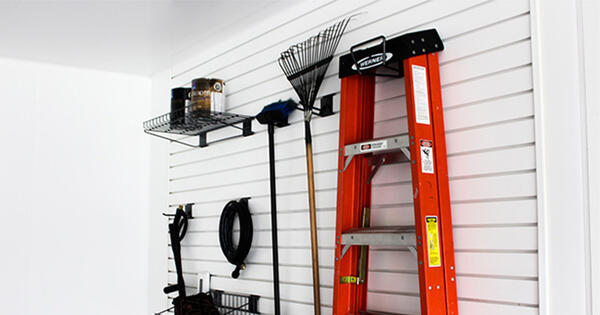Did you know that traditional building materials and construction contribute to 13% of global carbon dioxide (CO2) emissions per year? Meanwhile building operations are responsible for another 27% of emissions. Added to the high energy consumption of construction and operation of residential and commercial buildings, that poses a significant impact on climate change. Fortunately, there are positive steps being taken to implementing green practices to minimize the impact.
Green building certifications are designed to help minimize this damage and reward projects for environmentally friendly and sustainable design.
In this blog post, we cover the benefits of building with green building certifications in mind, and we break down the top 10 certification programs for residential and commercial projects that are currently recognized in North America.
What are Green Building Certifications?
Green building certifications and standards are third-party programs that assess buildings for their environmentally friendly and sustainable design, construction, operation, and maintenance practices. Buildings are usually assessed across several sustainability categories such as material selection, water conservation, energy efficiency, indoor environmental quality, and site development.
Some certification programs are tiered and use a points-based rating system to recognize green buildings for achieving different levels of sustainability. Other programs, however, offer a one-size-fits-all certification if a building earns a certain number of points.
The Benefits of Green Building Certification
The construction and operation of buildings generates 40% of global energy-related CO₂ emissions each year. While emissions have leveled off since 2015, this number needs to be 30% lower to keep average global temperatures within 2° Celsius of pre-industrial levels by 2030.
Green building certifications play a crucial role in achieving this goal by incentivizing sustainable building design, which offers several benefits in addition to showing your commitment to building a better world:
Reduce environmental impact
Sustainable buildings are designed to conserve water, enhance indoor air quality, be energy efficient, and are built with materials that respect our natural resources. Together, these qualities can reduce the carbon footprint and overall environmental impact of a building.
Decrease operational and maintenance costs
Installing energy-efficient appliances or heating and cooling systems, being strategic about window placement, and creating natural ventilation are all ways that developers can save on utility bills in the future. On average, green buildings save about 14 to 19% on total operating costs per year.
Increase property value
Certified buildings are more desirable and considered more valuable by investors, tenants, and occupants who prioritize sustainability. This can boost the marketability of a property and increase its resale value should you plan to sell.
Improve occupant health and well-being
Green building certifications help improve the indoor environmental quality of a building — including air quality, interior lighting, thermal comfort, and acoustics — that affect the way people learn, work, and live. Employers within green buildings often report higher recruitment rates, higher retention rates, and increased employee productivity.
Achieve regulatory compliance and earn tax incentives
Certification programs often align with or fulfill municipal, state or provincial, or federal requirements for environmental regulations, sustainability targets, and energy codes. This can translate to tax breaks, faster permitting, and project grants for some developers.
10 Green Building Certification Programs in North America
Green building certification programs can vary from country to country, while some are recognized globally. These ten programs are popular options for developers and contractors who are building structures in North America, specifically in Canada and the United States of America:
1. Building Research Establishment's Environmental Assessment Method
Building Research Establishment's Environmental Assessment Method, also known as BREEAM, was developed in the United Kingdom by the Building Research Establishment in 1990 and is now recognized internationally. BREEAM evaluates the sustainability performance of buildings across several categories — including management, health and wellbeing, energy, transport, water, materials, waste, land use and ecology, and pollution — to help achieve Environmental, Social, and Governance (ESG), health, and net zero goals. A building earns points across each category, and a building can achieve one of five certification levels depending on its overall score: Pass, Good, Very Good, Excellent, or Outstanding.
2. Energy Star Rating System
The Energy Star Rating System is a standardized rating system and label that helps developers and consumers alike identify energy-efficient appliances, electronics, heating and cooling systems, lighting, and commercial equipment. The Energy Star program also assesses buildings for their energy performance, and certified buildings must earn an Energy Star score of 75 or higher on the Environmental Protection Agency (EPA) 1 to 100 scale. In Canada, Energy Star Certification is overseen by Natural Resources Canada (NRCan). Certification is annual and must be verified by a third-party.
3. Fitwel
Fitwel is a certification program focused on protecting and improving human health and well-being inside buildings. It assesses the various ways a building's design and operations impact human health across seven categories: Community Health, Morbidity and Absenteeism, Social Equity, Well-Being, Healthy Food, Occupant Safety, and Physical Activity. The framework was developed by the U.S. Center for Disease Control (CDC) and the U.S. General Services Administration (GSA), and the program is now managed by the Center for Active Design (CfAD), which is a global nonprofit organization. Projects can achieve Fitwel certification at one of three levels: one star, two stars, and three stars.
4. Green Globes
Green Globes is an online assessment protocol and rating system that evaluates the environmental sustainability, health and wellness, and resilience of commercial real estate. Developed by the Green Building Initiative (GBI), Green Globes awards up to 1,000 points across seven categories, including indoor environment, resources, energy, project management, space and amenities, water, and emissions. Green Globes certification levels range from one to five globes, with five globes being the highest level.
5. Leadership in Energy and Environmental Design
Leadership in Energy and Environmental Design, also known as LEED, was created in 1998 by the U.S. Green Building Council in response to growing climate change concerns. Now, it’s the most widely used green building rating system in the world, as it provides builders with a practical framework for creating healthy, highly efficient, and cost-saving green buildings. A building or project earns LEED credits by addressing areas like carbon, energy, water, waste, materials, and indoor environmental quality. There are currently nine LEED categories: Sustainable Sites, Water Efficiency, Energy and Atmosphere, Materials and Resources, Indoor Environmental Quality, Innovation in Design, Regional Priority, Integrative Process, and Location and Transportation. Within each of these nine categories are specific credits that builders can earn to become LEED certified, and credits earn you points, which then determines the level of LEED certification your building achieves. There are currently four levels of LEED certification: Certified, Silver, Gold, and Platinum.
6. Living Building Challenge
The Living Building Challenge (LBC) was created by the International Living Future Institute (ILFI) and provides a framework for regenerative design and self-sustaining buildings. Regenerative design ensures buildings not only have a minimal environmental impact but also have a positive effect on surrounding natural systems. The program has a series of performance-based requirements that address seven performance areas: Place, Water, Energy, Health and Happiness, Materials, Equity, and Beauty. To achieve LBC certification, a project must demonstrate its compliance across all seven categories for at least 12 consecutive months.
7. National Green Building Standard
The National Green Building Standard (NGBS) is a residentially focused green building certification program that was developed by the National Association of Home Builders (NAHB) in collaboration with the International Code Council (ICC). NGBS provides guidelines and criteria for the design, construction, and operation of sustainable single-family homes, multi-family buildings, and residential developments in the U.S. Performance is measured across six categories: Lot Design and Development, Resource Efficiency, Water Efficiency, Energy Efficiency, Indoor Environmental Quality, and Building Operation and Maintenance. There are four different levels of NGBS certification that are awarded based on the number of points achieved: Bronze, Silver, Gold, or Emerald.
8. Sustainable Sites Initiative
The Sustainable Sites Initiative, also known as SITES, is a comprehensive framework and certification program for the design, development, and management of sustainable landscapes and outdoor spaces. This program applies to a variety of project types, including open spaces (like national parks and botanic gardens), streetscapes and plazas (like transportation hubs), commercial properties (like retail and office areas), residential neighborhoods, and educational or institutional properties (like college campuses, museums, and hospitals). SITES-certified projects “help reduce water demand, filter and reduce stormwater runoff, enhance biodiversity, provide pollinator and wildlife habitat, reduce energy consumption, improve air quality, improve human health, increase outdoor recreation opportunities, and much more.” The SITES rating system is a 200-point system, and projects can obtain SITES certification at one of four levels: Certified, Silver, Gold, or Platinum.
9. WELL Building Standard
Similar to Fitwel, the WELL Building Standard provides guidelines for designing, constructing, and operating buildings to support human health and wellness. WELL is administered by the International WELL Building Institute (IWBI) and considers factors that can affect human health across several categories, including Air, Water, Nourishment, Light, Fitness, Comfort, and Mind. Projects pursuing WELL Certification can achieve one of four certification levels: Bronze, Silver, Gold or Platinum.
10. GreenGuard
While GreenGuard itself isn’t a building certification program, it would be a mistake not to mention it, as GreenGuard-certified products contribute to certification across several of the previously mentioned programs, including BREEAM, LEED, and Fitwel. GreenGuard certifies building materials and products like furniture, paints, adhesives, and cleaning products that have low levels of volatile organic compound (VOC) emissions. High levels of VOCs can contribute to poor indoor air quality, which can have serious impacts on human health. By selecting products with GreenGuard certification, architects, developers, and building owners can create healthier indoor environments, which then contributes to other green building certifications.
Trusscore Can Help You Achieve LEED Green Certification
Trusscore Wall&CeilingBoard, Trusscore SlatWall, NorLock by Trusscore, and RibCore by Trusscore can all help builders earn credits towards LEED certification. All Trusscore products contribute to credits in two categories: Materials and Resources and Indoor Environmental Quality.
In the Materials and Resources category, Trusscore can contribute to two credits:
- Construction and Demolition Waste Management & Waste Management Planning. This credit aims to reduce the amount of construction and demolition waste disposed of in landfills and incineration facilities by recovering, reusing, and recycling materials. Trusscore products are 100% recyclable, meaning they can help reduce construction waste.
- Interiors Lifecycle Impact Reduction. This credit aims to encourage the reuse of existing building materials while reducing the amount of material being used. Trusscore products are durable, typically outlasting the buildings within which they’re installed. Trusscore products are also available in custom sizes to reduce material waste while off-cuts and excess material can be recycled. Trusscore panels can be removed and reused in other areas of a building.
In the Indoor Environmental Quality category, Trusscore can also contribute to two credits:
- Low Emitting Materials. This credit aims to reduce the concentrations of chemical contaminants that can damage air quality, human health, productivity, and the environment. All Trusscore products are low volatile organic compound (VOC) compliant and meet California’s standards for low emitting materials.
- Interior Lighting. This credit aims to promote building occupants’ productivity, comfort, and well-being by providing high-quality lighting. Trusscore panels have a light reflectivity value of 0.90, meaning they reflect 90% of the light that strikes a panel, contributing to bright spaces and reducing lighting requirements within those spaces.
To learn more about how Trusscore products can contribute to LEED certification, download the Trusscore for LEED v4.1 Solution Guide.
The sustainable qualities of Trusscore may also contribute to other green building standards in addition to LEED — be sure to review the specific criteria for any standard you apply to to determine if Trusscore can help you earn credits. If you're unsure, reach out to us — we'd be happy to help!






